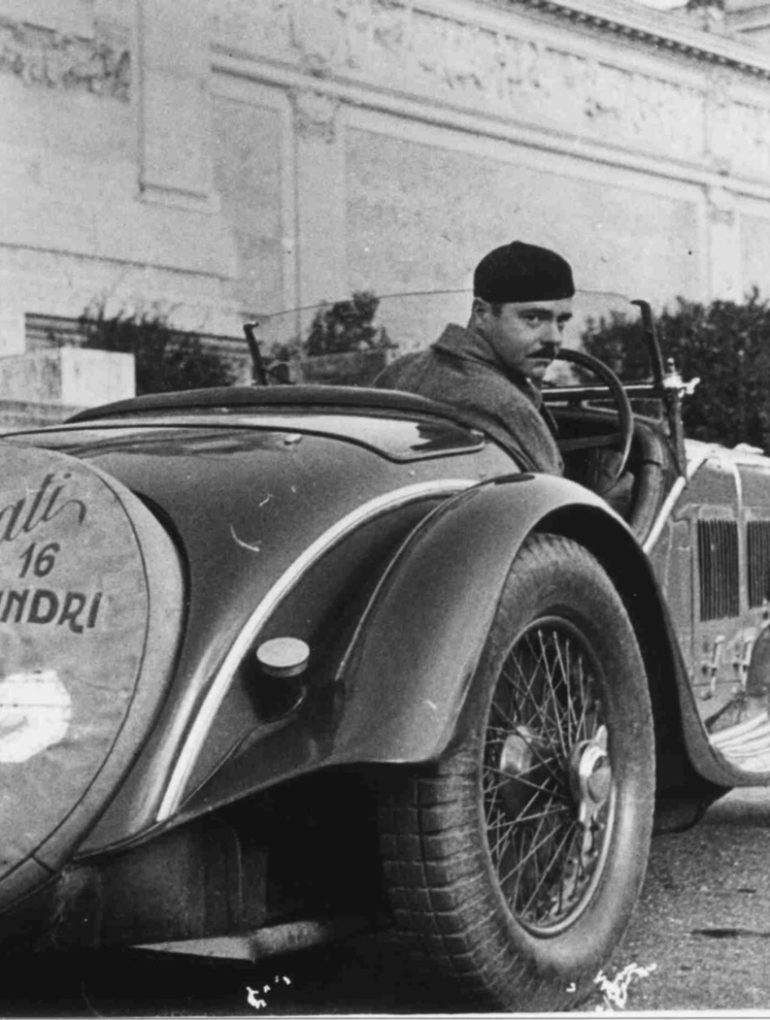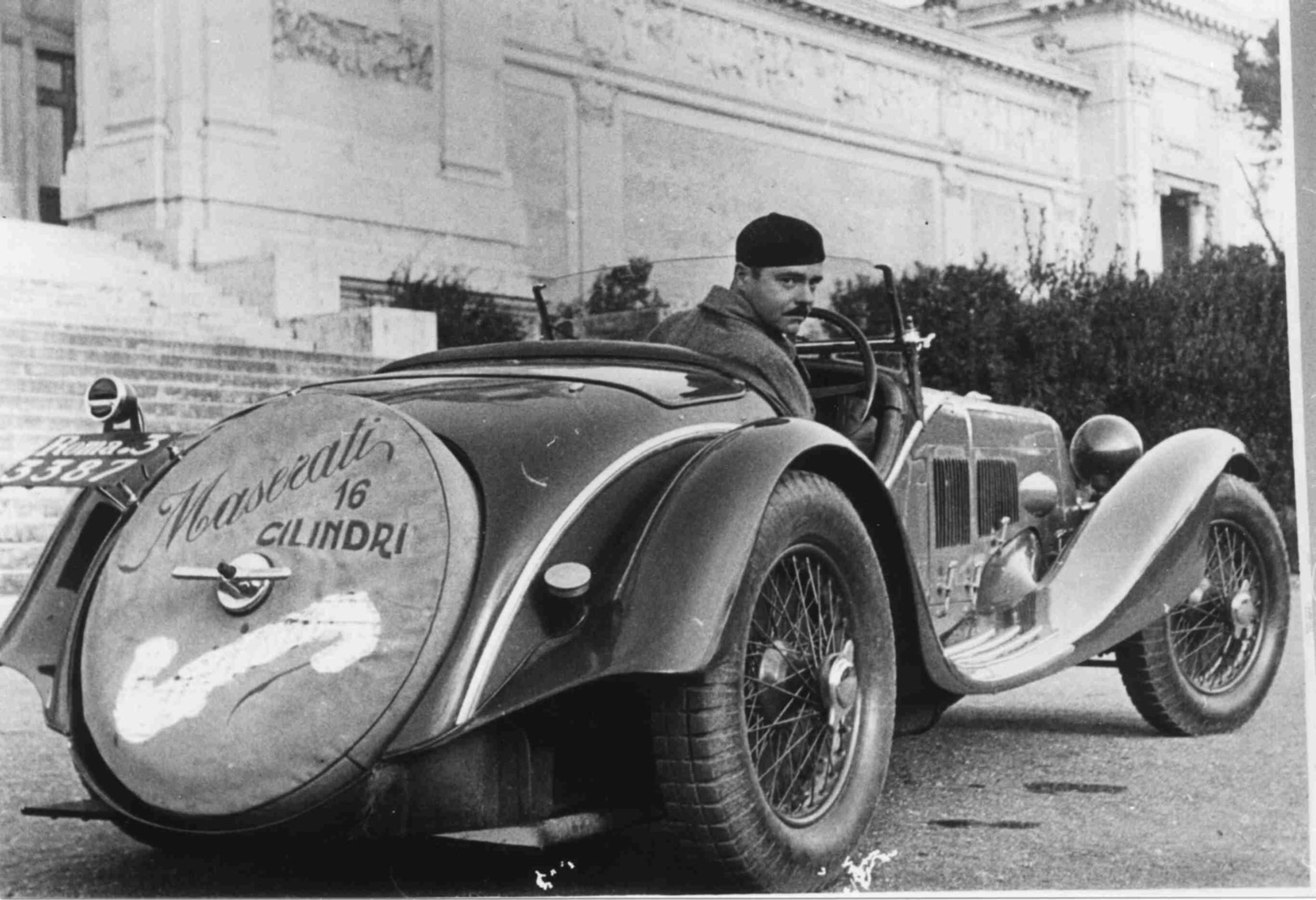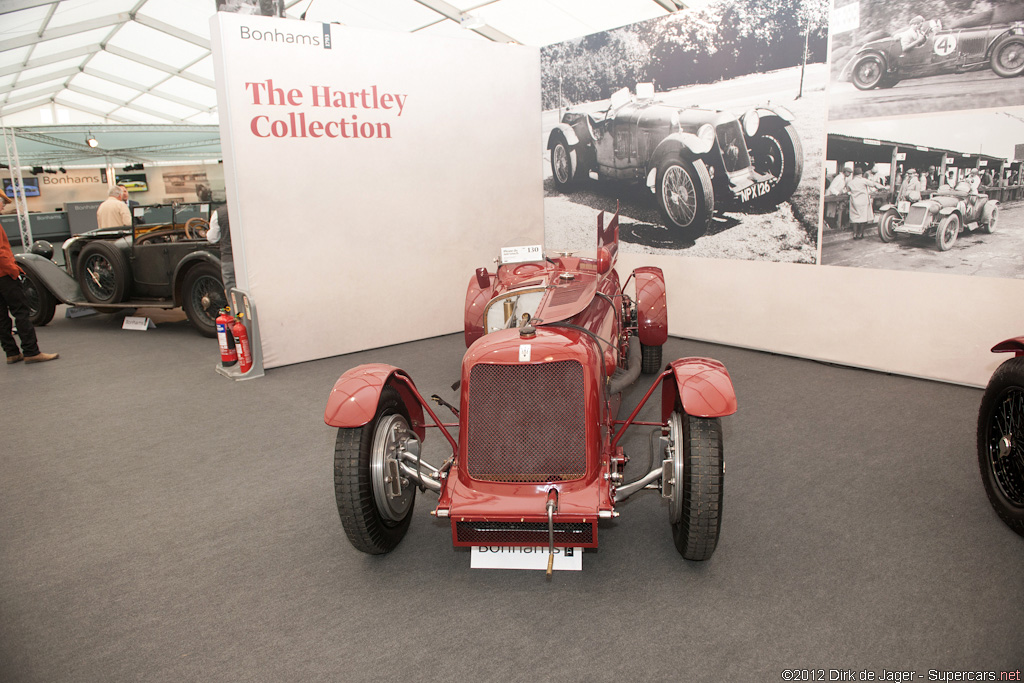1929→1931 Maserati Tipo V4 ‘16 Cilindri’
In 1929 Maserati took their their Grand Prix contender from normal to outrageous by fitting two of their Grand Prix engines in the manner usually reserved for speed-record cars.
The idea was fairly sound since the new model could produce 305 BHP with a top speed of 260 kph. This was possible due to the careful mixture of gasoline, Benzol and Ether.
Alfieri Maserati put Piero Visentini in charge for the design which used two Alfa Romeo 26B engines and combined them into a single crankcase and transfer case. The result was a V16 that with roughly 4-liters of displacement (V4). Each engine was independent with its own magneto, supercharger and crankshaft. Edoardo Weber, of Weber carburetor fame, fitted two of his prototype units and balanced the engines.
To fit two engines in the bay, Maserati’s Grand Prix chassis was widened. The bodywork also needed two bulges to clear the exhaust camshaft covers.
Famous author Luigi Orsini says the the V4’s offset starting crank renders the car unmistakable.
Due to the engine enormous thurst for fuel, a 178 liter fuel take was fitted which accommodated 52 liters/100km or roughly 4.52 MPG.
Maserati prepared the V4 for the II Gran Premio di Monza on September 15th 1929. On the track the car suffered from all the rigors of having two engines: increased tire wear and reduced braking at the forefront. All was not lost tho, the Alfa Romeo P2s outperformed all the competition.
The V4s claim to fame came at the Cremona flying 10 kilometres where Baconin Borzacchini set Maserati’s first world record by averaging 246 kilometres an hour.
With modifications to the tires and rear axle ratio the V4 won the VI Gran Premio di Tripoli, placed 3rd at the III Gran Premio di Monza and 3rd at the VI Coppa Acerbo.
One car was sold at the end of the 1930 season to Prof. Riccardo Galeazzi and fitted with a striking Zagato Sports body for the Pincio Concorso. This is the sole-surviving Tipo 4 that retains its original body, chassis and engine.
Sources & Further Reading
1. Orsini, Luigi; Zagari, Franco. Maserati. A complete history from 1926 to the present.Liberia Dell’Automobile., Milano: 1980.
Story by Supercars.net
In Detail
| tags | v16 |
| submitted by | Richard Owen |
| type | Racing Car |
| production years | 1929 – 1931 |
| built at | Bologna, Italy |
| production | 2 |
| engine | V16 |
| position | Front, Longitudinal |
| aspiration | Twin Roots Superchargers |
| ignition | Twin Bosch or Scintilla Magnetos |
| valvetrain | DOHC 2 Valves / Cyl |
| fuel feed | 2 Weber DO |
| displacement | 3961 cc / 241.7 in³ |
| bore | 62 mm / 2.44 in |
| stroke | 82 mm / 3.23 in |
| compression | 5.5:1 |
| power | 227.4 kw / 305 bhp @ 5500 rpm |
| specific output | 77.0 bhp per litre |
| bhp/weight | 290.48 bhp per tonne |
| body / frame | Aluminum Body over Steel Frame |
| driven wheels | Front Engine |
| wheel type | Spoked Wire |
| front tires | Dunlop 5.25×19 |
| rear tires | Dunlop 6.5×19 |
| front brakes | Mechanical Drums |
| rear brakes | Mechanical Drums |
| front wheels | F 48.3 x 8.3 cm / 19.0 x 3.25 in |
| rear wheels | R 48.3 x 10.2 cm / 19.0 x 4.0 in |
| steering | Worm & Sector |
| curb weight | 1050 kg / 2315 lbs |
| wheelbase | 2750 mm / 108.3 in |
| front track | 1350 mm / 53.1 in |
| rear track | 1300 mm / 51.2 in |
| length | 3874 mm / 152.5 in |
| width | 1610 mm / 63.4 in |
| height | 1230 mm / 48.4 in |
| transmission | 4-Speed Manual |
| tran clutch | Dry Multi-Disc |
| top speed | ~260 kph / 161.46 mph |
| fuel econ epa | 52 L/100 km or 4.52 mpg-us |
| fuel capacity | 178 litres or 46.99 gal. |
Auction Sales History
1929-30-Type Maserati V4 Recreation 4001.AH – sold for €540,875 This amazing recreation has taken some 20,000 hours work to complete. Anthony Hartley himself hand-made most of the components. The two 2-litre blocks are mounted each at 12.5-degrees on the common crankcase, in which the two individual crankshafts rotate clockwise, driving a central power-take-off gear which rotates anti-clockwise. This dictates that the crown-wheel and pinion are mounted the opposite way to normal. This stupendous mechanical assembly includes two crankshafts, 16 connecting rods and pistons, 32 valves, 64 valve springs, 55 ball races, 29 gears plus eight in the oil pumps two superchargers, four oil pumps, two water pumps, four camshafts and in all some 3,500 individual component parts. Just the crankshafts alone started out as 220lb steel billets. Anthony Hartley removed some 140lbs of that metal while hand-crafting them to shape on his lathe. All castings are in aluminium, whereas the originals were in magnesium apart from cast-iron heads and blocks.
Auction Source: 2012 Goodwood Revival Sale by Bonhams






